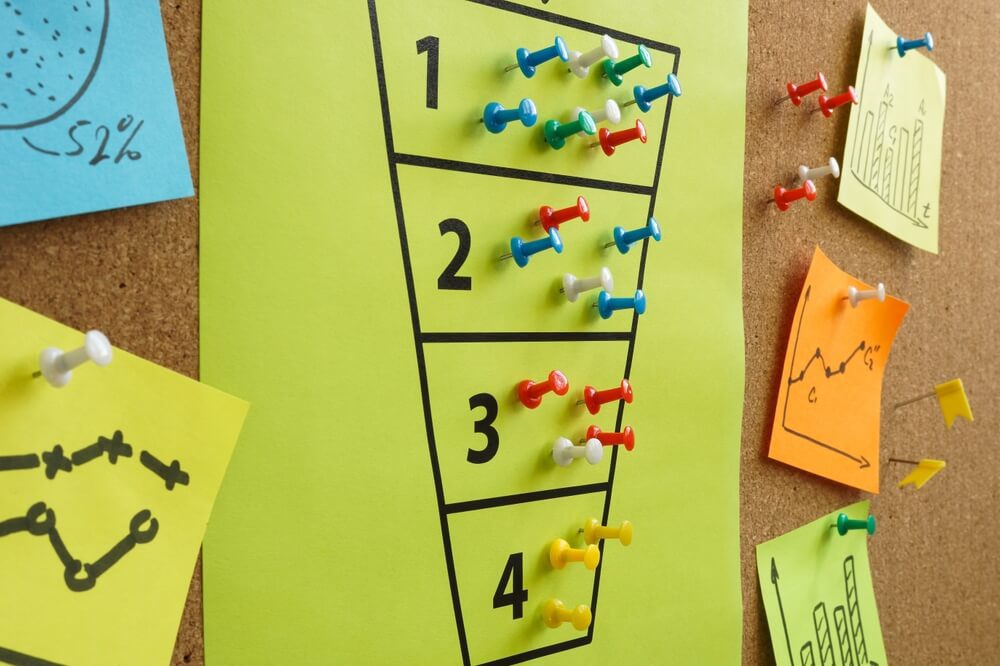
Lead Generation vs Sales Funnels: 3 Important Differences
Lead generation and sales funnels might seem synonymous, but they play distinct roles in the marketing ecosystem. A firm grasp of their differences is critical for businesses looking to succeed in San Diego's competitive market. With help from a San Diego lead generation expert, marketers can easily identify their unique characteristics.
This guide explores the three essential differences between lead generation and sales funnels:
- Purpose and focus.
- Technique and tools.
- Measurement and analysis.
Let’s go!
1. Purpose and Focus

Lead generation involves finding people who might be interested in the products or services that your business has to offer. Think of it like fishing for potential customers. The primary goal of lead generation is to attract people so that they might become future customers.
One popular way to do this is through search engine optimization (SEO). SEO can generate leads by increasing your website’s visibility to people searching for related products or services online.
While lead generation concerns finding potential customers, a sales funnel guides interested individuals to become paying customers.
The primary goal of sales funnels is to take someone who is interested in what you are offering and guide them step-by-step through the buying process. Sales funnels align customers’ interests with the right product or service until they make a purchase.
Comparative Analysis
Comparing these two concepts, we see that lead generation focuses on attracting people who might be interested in what you are selling. On the other hand, the sales funnel takes interested people and encourages them to buy a product or service.
- Lead Generation: Draws in potential customers. Focuses on generating interest.
- Sales Funnel: Motivates people to buy products. Focuses on closing the sale.
Imagine you own a store that sells sports equipment. Lead generation is putting up a sign outside your store to get people to come in and look around. The sales funnel is equal to helping customers find the perfect pair of running shoes and guiding them to the checkout counter.
In summary, while lead generation attracts potential customers, sales funnels convert them into paying customers. Both are essential to a successful business strategy but focus on different stages of the customer's journey.
2. Techniques and Tools

Businesses use various lead generation methods to pull in people who might be interested in their products or services. These techniques include advertising, social media marketing, and even chatbots for lead generation. Chatbots are like virtual assistants on a website that talk to visitors and answer their questions.
Interestingly, 80% of marketers believe marketing automation, including chatbots, is crucial to generating massive leads. Thus, experts in the business world consider tools such as chatbots essential for finding potential customers.
Sales funnels also use different tools and techniques to guide potential customers through the buying process. These tools include personalized emails, special offers, and demonstrations of the products. Sales funnels are similar to having an assistant who knows the customer’s needs and helps them find the desired items every step of the way.
Comparative Analysis
When comparing lead generation and sales funnels, notice that each uses different techniques and tools for their purposes.
- Lead Generation: Focuses on attracting potential customers. Uses advertising, social media marketing, and chatbots.
- Sales Funnel: Concentrates on guiding prospective buyers through purchase. Utilizes personalized emails, special offers, and product demonstrations.
Lead generation uses exciting ads or website chatbots to catch the audience's attention. Sales funnels then help prospects choose and buy the product.
For instance, a consumer sees an ad for a new video game. Lead generation is when a chatbot answers the customer’s questions about the video game. Afterward, they receive an email with a special discount for the game. It is accompanied by a video showcasing how exciting the game is. This is the sales funnel prompting them toward a purchase.
3. Measurement and Analysis

Measuring success in lead generation means looking at how well the strategies attract potential customers. Key performance indicators (KPIs) and analytics show businesses the number of people interested in their products or services. They are akin to a report card that describes how effectively the company attracts attention.
One KPI businesses often look at is the bounce rate. This metric tells them how many people leave their website without taking any action, such as signing up for a newsletter or clicking on a product.
For example, the average bounce rate for cold outreach campaigns is 7.5%. A higher rate in this area signifies that a business needs to improve in attracting prospects unfamiliar with the company.
Sales funnel success is determined by how effectively strategies convert prospects into paying customers. KPIs and analytics show how many people actually purchase from the business.
For example, a business can look at how many people clicked on a special offer email and then went on to buy the product. It outlines the path customers take from being interested in a product to purchasing it.
Comparative Analysis
The measurement and analysis of lead generation and sales funnel success tell us much about their differences.
- Lead Generation: Focuses on how many people are showing interest. It measures KPIs such as bounce rates.
- Sales Funnel: Focuses on how many people go from being interested to making a purchase. Measures the success of special offers in encouraging people to buy.
Understanding these differences helps businesses know what is working and what must be improved. It shows where the path is smooth and where there might be roadblocks. For instance, having a precise figure for marketing qualified leads (MQL) helps a business determine what it can do to meet its targets.
Consider lead generation as seeing how many people come to a party after receiving an invitation (measuring interest). Sales funnels look at how many people at the party try the new snack being promoted (measuring purchases). Both are important, but they look at different parts of the process.
Summing Up
Understanding the differences between lead generation and sales funnels is essential for any successful marketing strategy. Digital Authority Partners (DAP) can guide your business in leveraging these insights to grow and thrive. Contact us today to maximize your marketing and sales effectiveness.
Want To Meet Our Expert Team?
Book a meeting directly here




